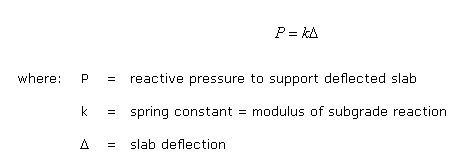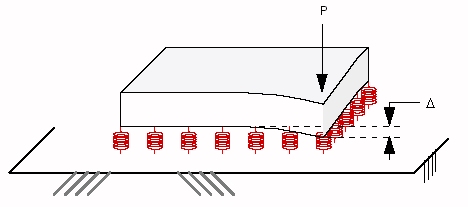The modulus of subgrade reaction (k) is used as a primary input for rigid pavement design. It estimates the support of the layers below a rigid pavement surface course (the PCC slab). The k-value can be determined by field tests or by correlation with other tests. There is no direct laboratory procedure for determining k-value.
The modulus of subgrade reaction came about because work done by Westergaard during the 1920s developed the k-value as a spring constant to model the support beneath the slab (Figure 1).

The reactive pressure to resist a load is thus proportional to the spring deflection (which is a representation of slab deflection) and k (Figure 2):


The value of k is in terms of MPa/m (pounds per square inch per inch of deflection, or pounds per cubic inch – pci) and ranges from about 13.5 MPa/m (50 pci) for weak support, to over 270 MPa/m (1000 pci) for strong support. Typically, the modulus of subgrade reaction is estimated from other strength/stiffness tests, however, in situ values can be measured using the plate bearing test.
